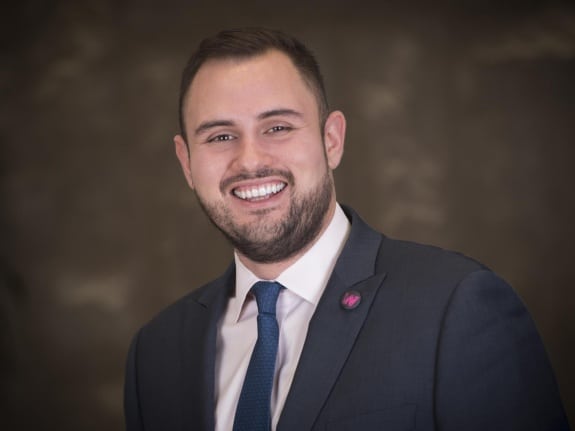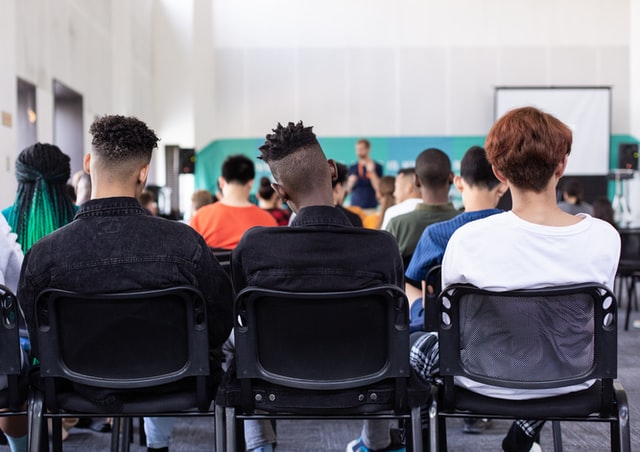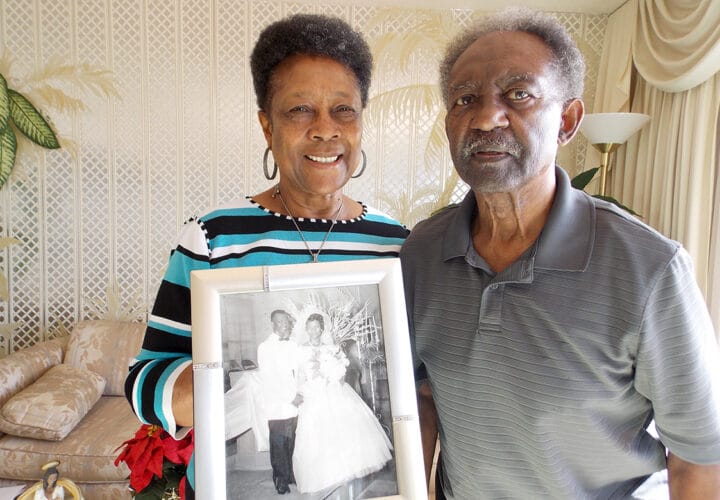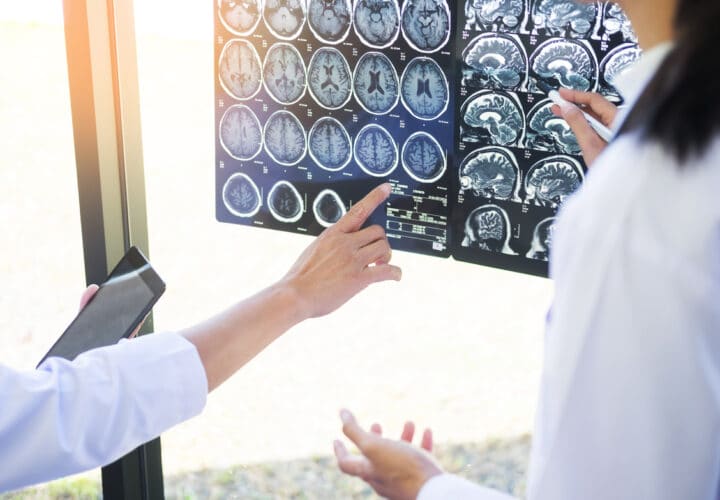Dementia disproportionately affects communities of color. The new UsAgainstAlzheimer’s Center for Brain Health Equity joins the fight to address the disparity.
According to the Alzheimer’s Association’s 2020 data, Black Americans are about twice as likely to develop Alzheimer’s or related dementias as their white counterparts.
“Demographics of the adult population are shifting and becoming more diverse, and in parallel, Alzheimer’s patient demographics are also shifting and becoming more diverse,” Jason Resendez, head of the LatinosAgainstAlzheimer’s Coalition, told Being Patient. “Because of these shifts, health equity, the development of tailored engagement, and education becomes essential in order for us to address this growing crisis.”
To help address this disparity, in August, UsAgainstAlzheimer’s announced the creation of the Center for Brain Health Equity, an organization devoted to making Alzheimer’s research more diverse. Resendez, appointed as the Center’s executive director, spoke with Being Patient about its objectives and the challenges that lay ahead.
Being Patient: In light of the current pandemic and continued unrest right now, why is addressing the racial disparity in Alzheimer’s impact and research so important?
Jason Resendez: The current pandemic and the social unrest that we’re in because of continued acts of violence against marginalized communities highlights the need for health equity, and equity in racial justice. Those issues have brought to light the importance of prioritizing equity and racial justice. That’s what UsAgainstAlzheimer’s have been doing for the past ten years since our founding: putting an emphasis on the importance of health equity in our nation’s efforts to address Alzheimer’s and dementia.
There is a sense of urgency because the demographic shift is happening. By 2030, there will be over a million Latinos and two million African Americans with Alzheimer’s. And we know these numbers are conservative, because Alzheimer’s is hardly ever diagnosed in these communities.
When a diagnosis does happen, it is usually in the later stages. That translates into many many more millions of caregivers providing 24/7 care for these individuals. In Black and brown communities, these responsibilities largely fall on the shoulders of family members who are unpaid. Stress on families and communities is going to grow dramatically in the following decades because of dementia and an inability to adequately address this issue.
By 2030 nearly half of Americans with Alzheimer’s will be Black or brown. In the coming decades, the Alzheimer’s patient population will reach 15 million individuals. There is a huge need for this research to be diverse. There needs to be system level change in order for us to meet that change, and such a change must also happen at the federal level.
Being Patient: Has COVID-19 made the issue any more urgent than it already was?
Jason Resendez: Alzheimer’s is a growing epidemic in this country. And COVID has underscored the scope of the Alzheimer’s pandemic. Dementia has been a driver of nursing home care and social isolation for the last many, many decades. Now, COVID has exacerbated the dementia crisis in this country, particularly for Black and Latino Americans.
Being Patient: How will you start addressing the issue?
Jason Resendez: First, we are working with our partners to educate and empower nurses who are on the front lines of health crises like COVID and the dementia epidemic, especially since nurses have been key across a number of case studies from institutions to hospitals to family clinics. Next, we’ll focus on developing public health strategies to promote brain health in Latino and African American communities. The third focus of the Center is to leverage community level data to inform how we develop these messages and how we target outreach.
Being Patient: One of the focuses of the Center will be working closely with nurses. Could you speak more about that?
Jason Resendez: Nurses are a critical workforce, and because when we’re prioritizing health equity, we know that:
- They are the most trusted health providers in this country, and trust is essential when dealing with a highly stigmatized disease like Alzheimer’s. So nurses are key for that reason.
- Nurses are also more likely to reside in the communities that they’re serving. So, they’re also more likely to work in community health centers, serving predominantly marginalized people of color. They give us an important opportunity to meet these patients and individuals at risk of dementia where they are. So engaging, educating and empowering nurses is key.
Being Patient: And you mentioned promoting brain health. What does that look like in practice?
Jason Resendez: What we’ve found over the course of our work for the last ten years and working with community-based organizations is that the idea of brain health isn’t always discussed as it relates to Alzheimer’s. Alzheimer’s is a conversation around sickness and fear, and brain health is really important for wellness. But there are things that you can do to reduce your risk for cognitive decline in later life. That hopeful message wasn’t reaching those constituencies.
Growing evidence suggests that dementia risk can be modified by behaviors that are healthy for the brain, including effective management of hypertension, diabetes and obesity. In fact, the Lancet Commission released new research showing that managing certain risk factors could prevent or delay approximately 40 percent of worldwide dementia cases. Under-resourced communities are at a disadvantage in managing these risk factors, however, due to deep inequities in education, access to exercise opportunities and nutritious food.
Being Patient: You’re working with networks of Latino and African American influencers and organizations including folks like the Reverend Al Sharpton, Melanie Barnes and others to help get this message out there. What kind of messaging are you starting with to get this hopeful news about brain health out there?
Jason Resendez: We are communicating the idea that there’s a lot of promise happening in laboratories, and high-income communities, related to risk reduction for dementia. That hope and research is not making it into the hands of minority serving providers and minority identified providers. So our second goal of the Center is to develop engagement strategies and messages to help build bridges between exciting research and individuals who can put that research into use.
We’re really excited to be able to work with the partners that I listed to develop those messages in culturally resonant ways. We see a lot of interesting brain health messages that talk about Soul Cycle, and yoga and pilates. These are all great for an audience where that’s a part of their daily life, but that’s not going to be the case when you’re living in a low-resource community where it’s too hard to take a Soul Cycle class. So you need to think about what the culturally appropriate messages are for these communities. It’s also a matter of creating more culturally relevant options for people to act on their brain health and take action.
It’s about understanding what’s good for your heart is good for your brain. That’s the best place to start. A lot of people understand heart health, and managing diabetes, particularly in Black and brown communities where there are higher rate health disparities.
Understanding that managing my heart problems, or managing my diabetes, as a way to promote brain health is a critical message that hasn’t gotten out there. Making that heart-brain connection is the critical first step.
Being Patient: You mentioned that the Center will leverage data for this messaging strategy. What data is most valuable for this?
Jason Resendez: We’re really excited about a tool that we’re developing which is called the National Alzheimer’s Disease Index. It enables us to visualize and analyze Medicare Alzheimer’s data by geography. We can look at zip code, county, congressional districts, and analyze that by different cuts of the Alzheimer’s health data: by prevalence, incidence, emergency room costs, hospital utilization, and demographics.
With this tool, I can pinpoint where there are the highest rates of Latinas being admitted to the ER because of Alzheimer’s.
Being Patient: What’s the timeline for putting the Index into play?
Jason Resendez: We have a working group of over fifteen experts from across the country from academic institutions, industry, and community-based organizations, who are collaborating on the development of the index. Our goal is to have it publicly launched so you can get a user membership to use it by the end of 2021.
In the meantime, we’re developing a series of reports using this data. We’re working on a report that will be ready within the next two months, and looks at which counties in this country have the highest rates of Black and Latino Americans with Alzheimer’s, and then starting to analyze: What are the similarities between those counties? How does that compare to counties where there is a low prevalence of Alzheimer’s among people of color? That will help us understand the social inequities that exist in these highly impacted counties.
The interview has been edited for length and clarity.




